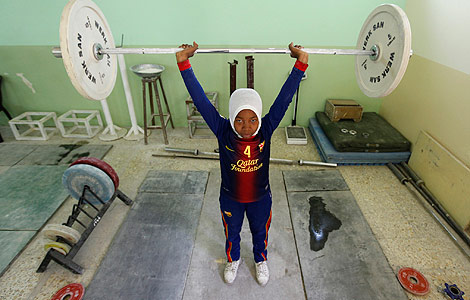Dhaka building collapse a lesson for all
Updated: 2013-05-10 07:06
By Chen Weihua (China Daily)
|
|||||||||||
While Dhaka is thousands of kilometers away from most Chinese cities, the disaster in the second-largest garment-exporting nation in the world should be a wake up call, as China is the biggest garment exporter in the world.
Some Chinese cities conducted probes after the Dhaka tragedy and halted production at garment factories that did not meet safety standards. However, most cities did not, perhaps because they have become indifferent to industrial disasters.
In Xi'an, capital of Shaanxi province, for example, the past seven months have seen four industrial accidents on subway construction sites, including one on Monday that killed five people.
As many Chinese cities are rushing to build subway lines, industrial accidents have become as common as the notorious mining disasters that have haunted the nation for decades.
Statistics from China's State Administration of Work Safety show that 71,983 people died in a total of 337,000 industrial accidents across China in 2012. That averages out 200 deaths and 950 accidents a day.
Progress is obvious in the field. The total death toll from mine disasters in China for the first time fell under 1,500 in 2012, compared to 1,973 deaths in 2011. Still, the number is strikingly high compared with those in developed economies.
The high incidence of work-related accidents in China means that there is still much to be done to protect the rights and safety of workers in the country, which has the largest manufacturing workforce in the world.
In this sense, the bloody Dhaka factory disaster should be a lesson for multinationals, governments, and companies and workers of the importance of safety standards, and observing them.
The author, based in Washington, is deputy editor of China Daily USA. E-mail: chenweihua@chinadailyusa.com
(China Daily 05/10/2013 page8)
Related Stories
Number dead in Bangladesh factory collapse exceeds 600 2013-05-06 08:12
Bangladesh building collapse death toll hits 435 2013-05-02 17:28
Suspension bridge collapses in C China 2013-05-02 00:40
3 dead, 7 injured in brewery collapse 2013-04-14 11:50
Today's Top News
MOC queries World Bank China business report
Exporters urged to 'optimize'
Producer Price Index continues to decline
India's top diplomat praises cooperation
China urges UK concrete action for ties
Scientists paying more to reach world
Possible EU punitive duties opposed
Japan protests Okinawa report
Hot Topics
Lunar probe , China growth forecasts, Emission rules get tougher, China seen through 'colored lens', International board,
Editor's Picks

|

|

|

|

|

|





